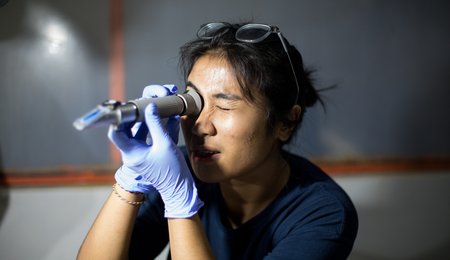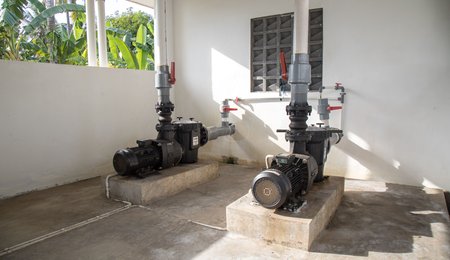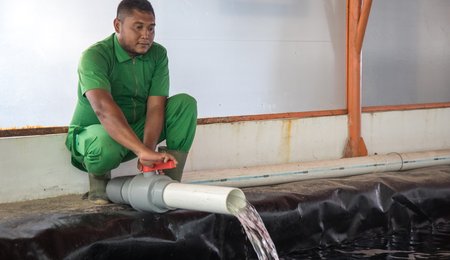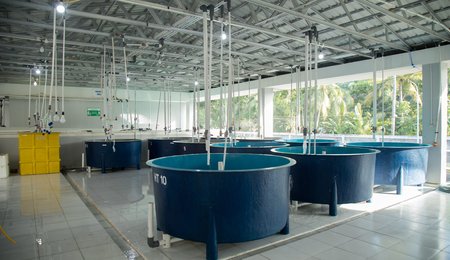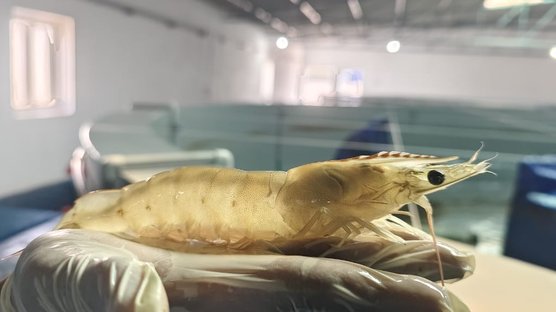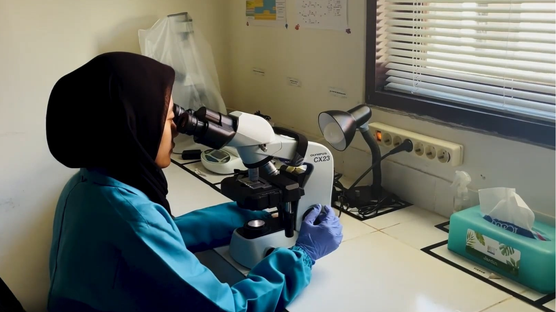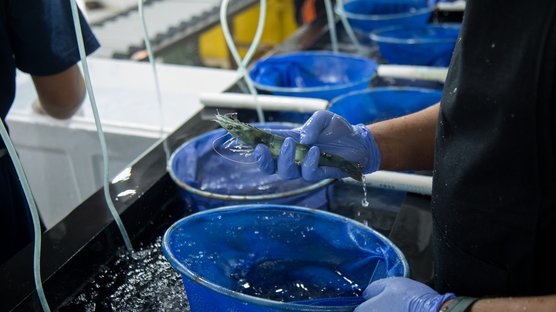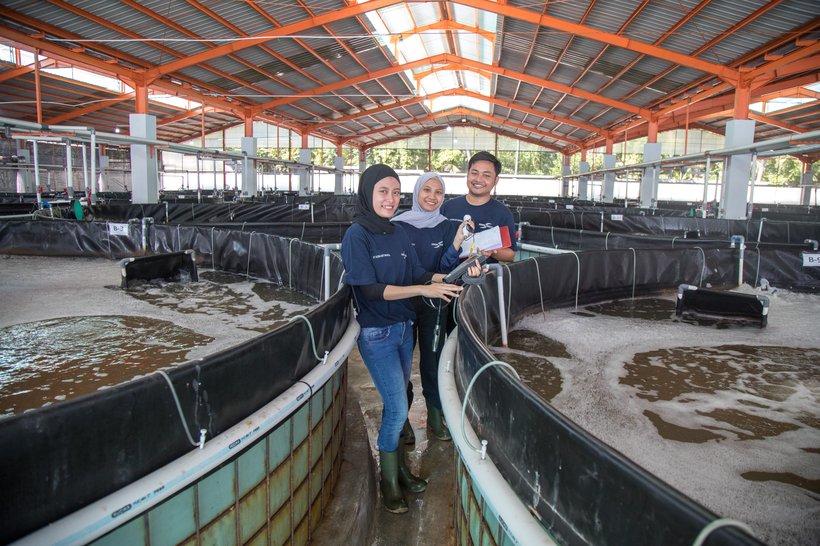
Published on March 28, 2025
Water management and quarantine processes: the keys to success in aquaculture
In sustainable shrimp farming, water management is a determining factor. Shrimp are particularly sensitive to fluctuations in parameters such as salinity, pH, and temperature. This is why Kona Bay is committed to impeccable control of its water use and the safety of its products.
At Kona Bay, the well-being and control of our products are at the heart of our ambitions. Upon arrival, the boxes are disinfected to eliminate all surface bacteria. This measure guarantees hygiene control and the eradication of potential diseases.
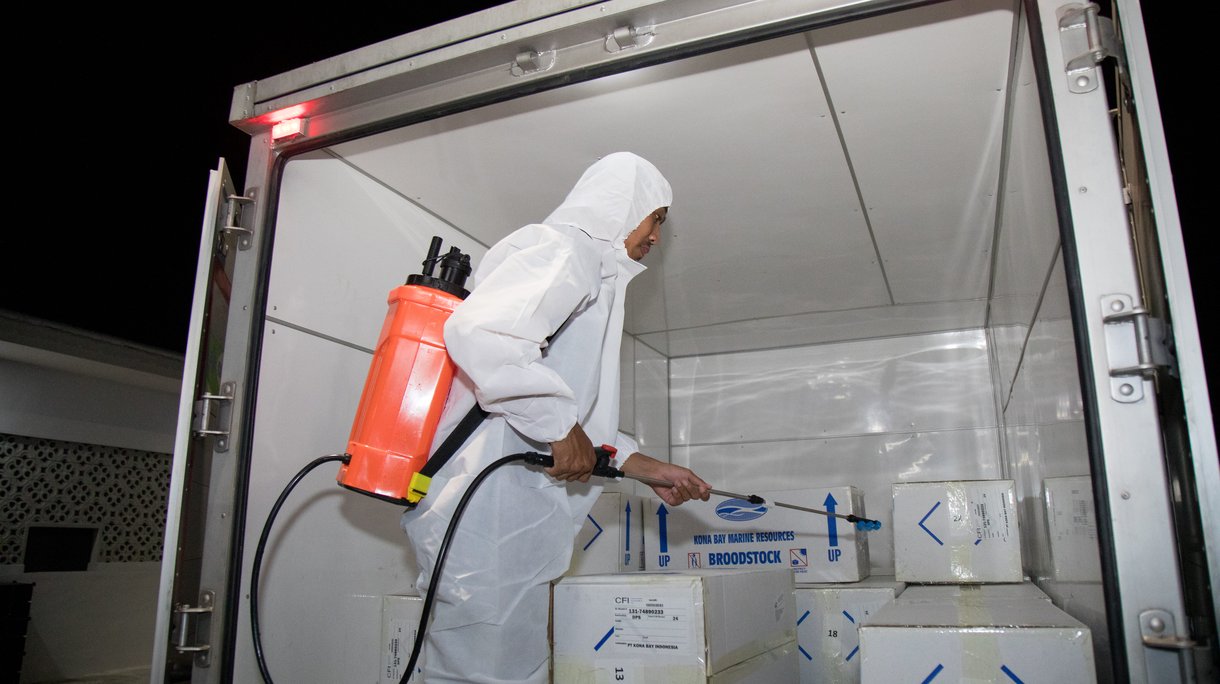
A continuous monitoring is essential and allows us to collect data in real time, enabling us to make immediate adjustments, if necessary, through:
- A quarantine process: Before the shrimp are introduced into the breeding ponds, they are placed in a quarantine pond for 14 days. This process can be supervised by an agency to ensure that no disease is introduced, by disinfecting the boxes and checking and counting the products.
- An advanced filtration system: The water is filtered in several stages to eliminate contaminants. The oxygenation of the water and the filtration rate directly influence the well-being of the shrimps. Regular tests measure the temperature, salinity and pH to guarantee stability:
- A stable pH between 7 and 8 and a water temperature between 28 and 30°C are ideal.
- Control of minerals and nutrients: Shrimp need a constant supply of minerals, especially calcium, magnesium, and potassium, for optimal development, with regular monitoring to avoid deficiencies.
Mineral balance is crucial for the growth and reproduction of shrimp.
